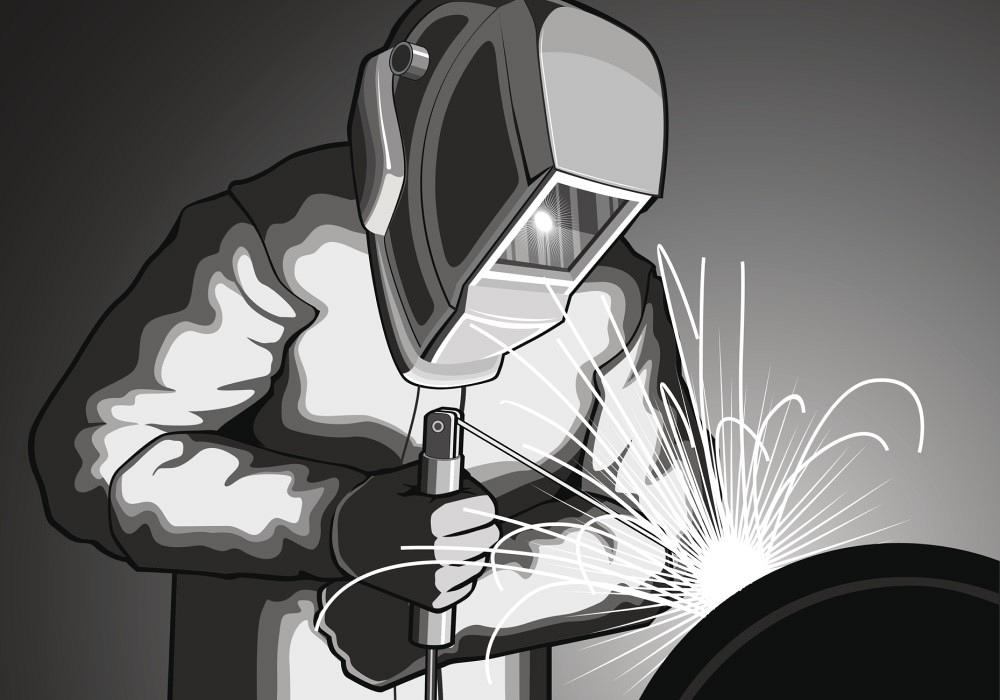Getting Welding Quality: Revealing the Secrets of WPS Implementation and Optimization
In the world of welding, achieving quality is a search that hinges on the careful implementation and optimization of Welding Treatment Requirements (WPS) By delving right into the essential components, methods, difficulties, and best methods linked with WPS, a globe of welding quality waits for those that are ready to explore its depths.
Value of WPS in Welding
The Relevance of Welding Treatment Specs (WPS) in the welding market can not be overstated, serving as the backbone for making sure consistency, top quality, and security in welding operations. A WPS provides comprehensive directions on just how welding is to be performed, including crucial variables such as products, welding procedures, joint layout, filler steels, preheat and interpass temperature levels, welding currents, voltages, traveling rates, and extra. By adhering to a distinct WPS, welders can maintain harmony in their work, resulting in regular weld high quality throughout various projects.

Trick Elements of WPS
Going over the integral parts of a welding procedure spec (WPS) is vital for understanding its duty in welding operations. A thorough WPS consists of a number of crucial elements that assist welders in achieving high quality and uniformity in their work. One crucial element of a WPS is the welding process requirements, which outlines the particular welding procedures to be utilized, such as gas tungsten arc welding (GTAW) or shielded steel arc welding (SMAW) Furthermore, the WPS includes details on the welding products, such as the kind and specs of the base metal and filler steel to be used. The WPS additionally specifies vital variables like welding criteria, interpass and preheat temperature requirements, and post-weld warmth treatment procedures. Moreover, it consists of details on joint layout, fit-up, and any unique strategies or safety measures necessary for the welding procedure. By incorporating these essential elements right into the WPS, welding treatments can be standardized, ensuring quality, effectiveness, and safety and security in welding operations.
Techniques for WPS Optimization

Secondly, training and credentials of welding personnel according to the specific needs of the WPS is paramount. Giving thorough training programs and making sure that welders are accredited to execute treatments laid out in the WPS can lead to higher top quality welds and decreased rework.
In addition, leveraging technology such as welding software and monitoring systems can assist in optimizing WPS. These tools can assist in monitoring variables, guaranteeing parameters are within specified restrictions, and supplying real-time comments to welders, enabling them to make immediate changes for boosted weld top quality.
Common Challenges and Solutions
Facing barriers in implementing the approaches for WPS optimization can impede welding procedures' effectiveness and quality. One usual difficulty is insufficient training or see here understanding of the welding procedure specifications (WPS) amongst the welding team. This can lead to improper execution of welds, resulting in defects and revamp. To address this, thorough training programs must be implemented to guarantee that all welders are efficient in using and analyzing WPS precisely.
An additional challenge is the lack of proper documentation and record-keeping, which is crucial for WPS optimization. Without clear documents of welding parameters, materials utilized, and evaluation results, it comes to be difficult to identify locations for enhancement and make certain uniformity in welding procedures. Carrying out a durable paperwork system, such as digital welding monitoring software application, can assist streamline record-keeping and promote data evaluation for constant renovation.
In addition, inconsistent welding tools calibration and upkeep can present a significant obstacle to WPS optimization. Routine devices checks, calibration, and maintenance timetables ought to be stuck to strictly to ensure that welding specifications are properly regulated and preserved within the specified resistances (welding WPS). By attending to informative post these usual difficulties with proactive solutions, welding procedures can improve performance, top quality, and overall welding excellence
Finest Practices for WPS Application
To guarantee successful WPS implementation in welding operations, adherence to market standards and precise attention to detail are extremely important. When launching WPS application, it is crucial to begin by thoroughly understanding the details welding requirements of the task. This requires a comprehensive review of the welding treatment specifications, materials to be welded, and the ecological problems in which the welding will certainly happen.
As soon as the demands original site are clear, the following step is to select the suitable welding procedure that aligns with these requirements. This entails speaking with the pertinent codes and standards, such as those given by the American Welding Society (AWS) or the International Company for Standardization (ISO), to guarantee conformity and top quality.
Additionally, documenting the entire WPS application process is vital for traceability and high quality control. Detailed records must be kept pertaining to welding specifications, material prep work, preheat and interpass temperatures, welding consumables made use of, and any type of inconsistencies from the original treatment. Normal audits and reviews of the WPS can aid identify areas for renovation and ensure recurring optimization of the welding process.


Verdict
In final thought, the implementation and optimization of Welding Treatment Specifications (WPS) is critical for attaining welding excellence. By recognizing the key components of WPS, carrying out effective methods for optimization, dealing with common obstacles, and complying with best practices, welders can make certain top notch welds and safe working conditions. It is necessary for professionals in the welding industry to focus on the correct application of WPS to boost total welding efficiency and accomplish wanted outcomes.
The Relevance of Welding Procedure Specs (WPS) in the welding sector can not be overemphasized, serving as the backbone for guaranteeing consistency, high quality, and safety and security in welding operations. A WPS supplies thorough instructions on how welding is to be carried out, including important variables such as products, welding processes, joint design, filler metals, interpass and preheat temperature levels, welding currents, voltages, travel speeds, and much more. One critical element of a WPS is the welding procedure specification, which describes the certain welding procedures to be made use of, such as gas tungsten arc welding (GTAW) or secured steel arc welding (SMAW) By incorporating these crucial aspects into the WPS, welding procedures can be standardized, ensuring top quality, efficiency, and security in welding procedures.
It is critical for experts in the welding industry to prioritize the appropriate implementation of WPS to enhance total welding performance and achieve wanted results.
Comments on “How to Develop an Effective Welding WPS: Tips and Best Practices”